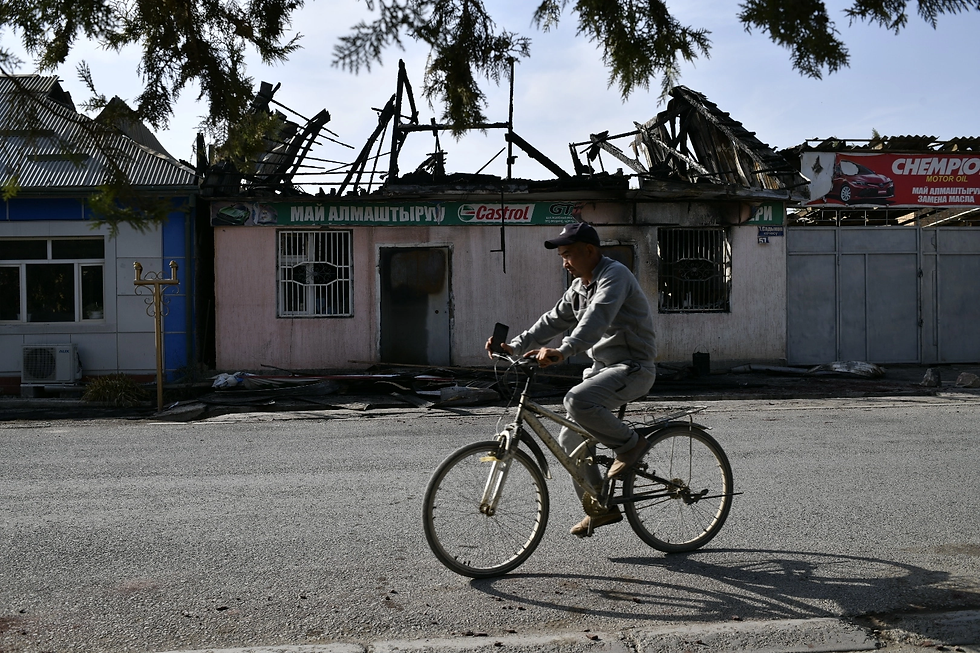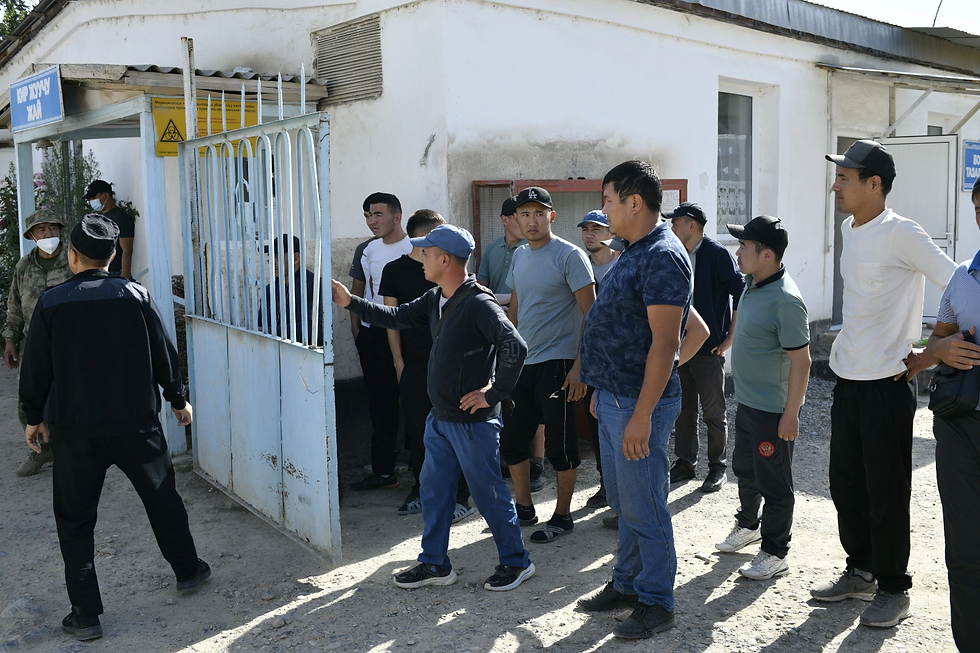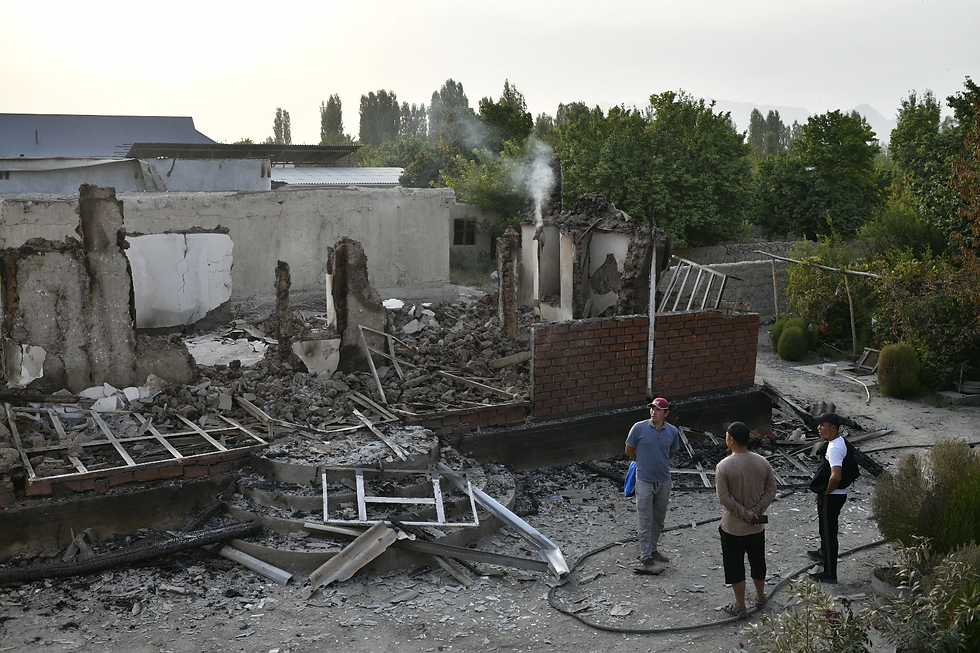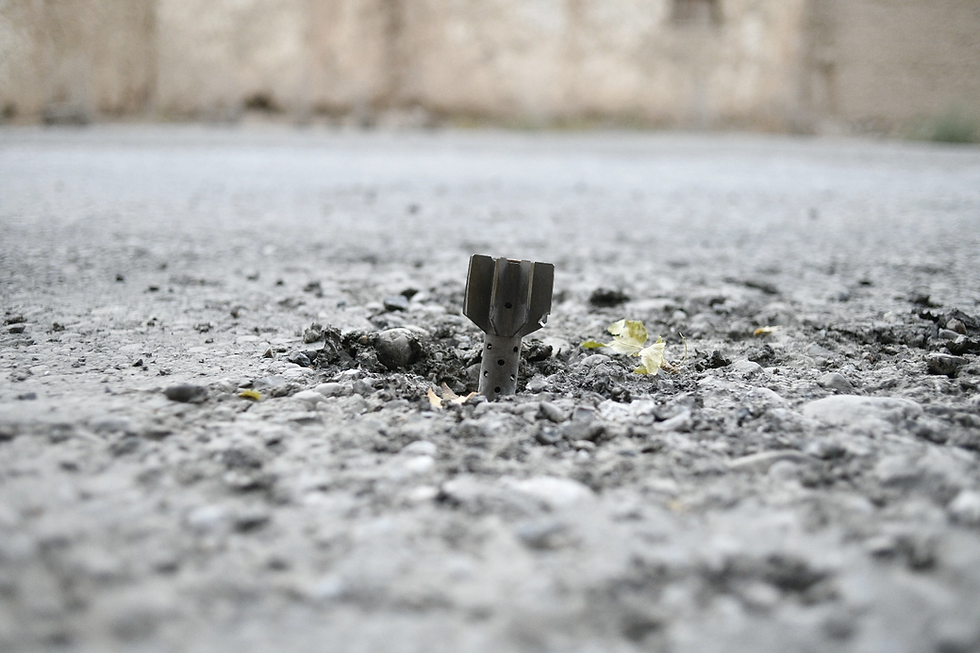Tens of thousands have been displaced and dozens killed in the fighting.
Sep 18, 2022

Batken has become a ghost town (all photos by Danil Usmanov)
As people in Kyrgyzstan and Tajikistan pray and hope that the fighting along their border is over, thoughts will turn to the damage to life and property wrought in under a week of fighting.
The reckoning will take time. Civilians are still stunned by trauma.
Batken, the capital of the eponymous region in southern Kyrgyzstan, has become a ghost town since hostilities broke out.
When a Eurasianet correspondent arrived there on September 17, all the small stores and cafes were closed. At least two minimarkets were open, but soldiers were their only customers. Just a trickle of people was using the gas stations.
Most of the shelling and incursions by Tajik troops occurred in places right on the border. On September 16, though, the odd projectile landed on Batken too, despite it lying several kilometers from Tajikistan.
Some residents returned to the city throughout the day from the villages to which they had repaired to avoid the danger of fresh shelling. In the evening, they left again.

A few dozen people gathered at the military enlistment office. They had come from all over the country to sign up and were asking officers for weapons. They didn’t get any.
A building near the enlistment office used to sell motor oil. It was hit by a rocket and now lies in ruins. The teahouse next door had its windows blown out. A few curious passersby peered inside and took pictures.
There were more people in and around the grounds of the hospital. Gunfire rang out somewhere nearby at 10 p.m. An aircraft, probably a small plane, flew overhead, and a convoy of trucks thundered through the city.
Late at night, the owner of the hotel where the Eurasianet correspondent was staying roused his guests and ordered everybody to collect their documents and leave. It was dangerous to stay, he said. The hospital too was being evacuated, he explained.
A long line of cars snaked east toward Uzbekistan’s enclave of Sokh – yet another territorial anomaly in this geographically vexing area. The Uzbek government has earned warm plaudits from many in Kyrgyzstan for enabling the mass evacuation of civilians through its territory.

Some people had driven out to fields in the open and slept there for the night. They said they lived near a military outpost and thought it better to keep away from there while the danger was still high.
The deep sense of fear has spread all throughout the region of Batken. As of September 18, almost 137,000 people had fled for their safety, Emergency Situations Ministry officials said. According to official government data, almost 550,000 people live in Batken region.

In Razzakov, a town right in the very southwestern-most corner of the country, crowds have for days assailed the little airport there in the hope of getting on a flight out.
Kyrgyz Health Ministry representatives said the death toll had, as of the evening of September 18, reached 46. Around 140 people have been hospitalized, they said.
The sense of panic has also spread to the Osh region, which lies to the south and east of Batken. Fully 5,300 people were evacuated from a near-border area in the region’s highland Chon-Alai district that reportedly saw exchanges of mortar fire between Tajik and Kyrgyz troops on September 17.

Border areas in Tajikistan, which have also seen rocket attacks, are more populous than those in Kyrgyzstan. But news of evacuation efforts there has filtered out only by word of mouth. The government’s official channels in Dushanbe have entirely disregarded the humanitarian aspect of the unrest.
For several days, the news of fatalities too only came through anonymous accounts from locals. The authoritarian regime in Tajikistan has cowed both journalists and citizens into submission. Even reporting on the victims of conflict is hazardous.

The other form of evidence for the human toll of the violence are the grisly video images that have been shared across social media.
One piece of footage filmed in the Tajik border town of Ovchi Kalacha showed five people that appeared to have been killed in one instant, possibly by a shell strike. A government statement released over the weekend appeared to allude to this incident, although there is no certain way of knowing.
Other brief snippets of video footage provide evidence of more deaths, but little sense of the context: a lifeless middle-aged woman lying in a thick slick of blood as another woman kneels over her weeping; a charred and mangled passenger vehicle with the barely recognizable remains of human figures inside; two clean-shaven young soldiers lying on their backs surrounded by destroyed boxes of ammunition and spent heavy-caliber shells.
The Tajik Foreign Ministry broke its government’s silence on fatalities on September 18 in a statement of protest in which they accused the Kyrgyz army of taking aim at an ambulance traveling through the near-border village of Chorqishloq, not far from the district capital, Isfara.
“As a result of this attack, five members of the same family were killed; they included two children – Asmoa, born on July 11, 2016, and Imron, born on December 5, 2017. A paramedic and a driver [were also killed],” the statement read.

More deaths were caused, they said, by Kyrgyz drone strikes. Six civilians were killed after a missile hit a school in Ovchi-Kalacha and another 12 died after a drone strike on a mosque in the same town, the Foreign Ministry said. At least one of those incidents is likely the one captured in the amateur video footage spread online.
Neither Kyrgyzstan nor Tajikistan are being forthcoming about the disposition of their forces around the disputed border. By all appearances, however, Tajik troops and irregulars have retreated from the Kyrgyz villages that they occupied after the first surge of major clashes.
No territorial gains or losses have been recorded. Only deaths.
Danil Usmanov is a photo and video journalist based in Bishkek.



